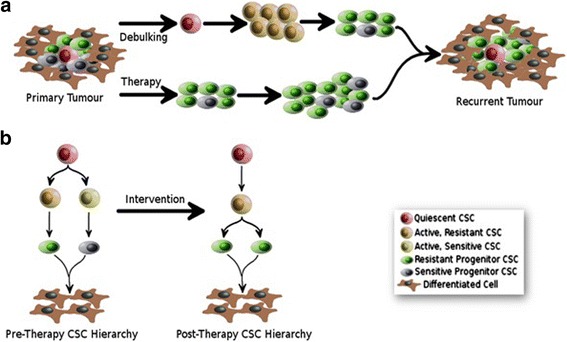Fig. 2.

Clinical Implications of a Dynamic CSC Hierarchy Model. The model shown proposes that CSC hierarchies are altered by and adapt to clinical intervention, which poses additional consideration for clinical targeting of CSCs. a Many malignancies are treated by surgical removal of the tumour mass (debulking) and/or therapy (chemotherapy, radiation-therapy etc.). Contemporary CSC Theory suggests that debulking may cause an awakening of quiescent CSCs (Red). In parallel, anti-cancer therapies are likely to kill off therapy-sensitive CSCs (Yellow, White). This model proposes that this is likely to result in the formation of a recurrent tumour that is dominated by therapy-resistant CSCs (Orange) and Progenitors (Green). b This model proposes that CSC hierarchies are dynamic, particularly when challenged with therapeutic interventions. As a result, identification and targeting of specific therapy-resistant components within the malignancy may improve the treatment of recurrent disease
